LGBTQ+ teachers don’t receive the training and support they need
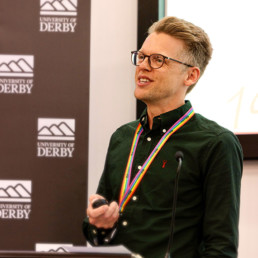
Written by Dr Adam Brett
Adam has completed a doctorate exploring the experiences of LGBT+ secondary teachers. A presentation of his findings can be found here. He also co-hosts a podcast called Pride and Progress, @PrideProgress, which amplifies the voices of LGBT+ educators, activists and allies.
Originally posted on The Conversation in May 2024:
https://theconversation.com/lgbtq-teachers-dont-receive-the-training-and-support-they-need-228162
Republished with permission of the author.
LGBTQ+ teachers report feeling stressed and even discriminated against in the workplace due to their identity. This is a problem when keeping teachers in their jobs is vital. Teaching is facing a crisis in both recruitment and retention: in 2021-22, more than 39,000 teachers quit the profession.
But there is no formal support or training offered to LGBTQ+ teachers by the Department for Education. Supporting the teaching workforce who identify as LGBTQ+ and making teaching a welcoming profession should be a priority for the government.
For LGBTQ+ teachers, working in UK schools may no longer be the deeply traumatic and dangerous experience it was under Section 28 of the 1988 Local Government Act, which was repealed in 2003. This law sought to ban local authorities and their schools from promoting the acceptability of homosexuality as a “pretended family relationship”.
But LGBTQ+ teaching staff continue to face challenges such as feeling unsafe in their workplace.
Throughout their careers, LGBTQ+ teachers are placed in the difficult position of deciding whether they should conceal or reveal their sexual or gender identity. This is not a decision they are trained to deal with, nor a decision they make just once. It is particularly tricky in schools where teachers must decide if, when, and how to be open with different groups – staff, students, parents, and others involved in school life.
As an LGBTQ+ former teacher, I know first-hand the emotional tax that comes with continuously negotiating LGBT+ visibility and identity within school.
Unsafe spaces
For my doctoral research I worked with 12 LGBTQ+ teachers from a variety of contexts, including faith, private, and single sex schools. The teachers took photos to represent the spaces where they felt most and least safe within their school, and described the significance of their photos.
The teachers changed how they behaved out of fear of being seen as LGBTQ+. They did this in particular in open or visible spaces, such as when on break duty, leading an assembly or in the staffroom.
In these spaces, the LGBTQ+ teachers were fearful of comments or incidents related to their identity that they felt unequipped to deal with. One teacher said:
I give my assemblies quite often, and I don’t hide my sexuality from anybody, so the student body knows that I’m gay … but when I’m doing my assemblies I feel, I feel scared and I don’t know if it’s because I know that they know that I’m gay and therefore, I’m like afraid of them … I don’t know hurling a slur or something.
By contrast, the teachers often described their classrooms as the spaces where they felt most safe. Here, they had created their own routines, relationships and systems.
Among the 12 participants, there were teachers who had been told not to discuss their sexual or gender identity. One teacher told me that they and others had been asked to sign a non-disclosure agreement in a Catholic school: “We weren’t allowed to talk about the fact [that we were gay],” they said.
These are extreme examples. Generally, though, the assumption of heterosexuality in schools can lead to personal questions and situations that LGBTQ+ teachers often feel unequipped to deal with.
Cisgender and heterosexual teachers might be asked about their partners and families and would feel no fear of retribution or backlash in answering those questions. But what might be an entirely unremarkable conversation for a heterosexual teacher might well be deeply fraught for an LGBTQ+ teacher. This can be understood as “heterosexual privilege”.
Despite thousands of the teacher workforce identifying as LGB+, they receive no formal support or training for the challenges that they are likely to experience in their career. Sending LGBTQ+ teachers into schools without adequate support or training will probably lead to these teachers experiencing discrimination and stress.
Some teacher training providers ensure that trainees from minority backgrounds receive training and support to help them face the additional barriers they may experience in schools. However, implementation remains inconsistent.
Future reforms to the Initial Teacher Training and Early Career Framework, which outlines the minimum entitlement for trainee and early career teachers, must reflect these challenges to ensure a minimum and equitable level of provision for LGBTQ+ teachers. If they don’t, fewer LGBTQ+ teachers will enter or remain in the profession. Students and families won’t see themselves represented, and young people won’t be equipped for life in a diverse society.
LGBTQ+ people have the potential to make exceptional teachers and leaders. With the right support, they can thrive in the profession and provide young people with the role models that they desperately need.
Empowering PSHE Leadership: Leading with DEI Principles
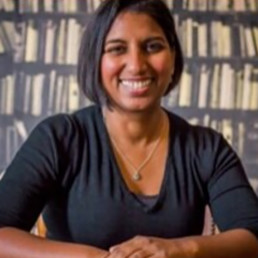
Written by Malarvilie Krishnasamy
Malarvilie is a seasoned leadership consultant, coach, and trainer with over 20 years of experience in education. As a former history teacher and senior leader, she passionately advocates for coaching as a catalyst for transforming school cultures. Malarvilie offers accredited courses, endorsed by The Institute of Leadership, which develop emotional intelligence and assertive leadership skills. Her reflective and supportive programmes enhance staff morale and well-being, promoting humanity in leadership. A vocal proponent of equity, diversity, and inclusion, she actively engages as an ally through speaking engagements, workshops, and amplifying the work of others. Malarvilie is also deeply committed to promoting Personal, Social, Health, and Economic (PSHE) education, recognising its pivotal role in nurturing well-rounded individuals.
I’m excited to tackle a topic that’s not just important but essential in education: leading PSHE with a DEI (Diversity, Equity, and Inclusion) lens. As educators, we know that PSHE isn’t just about teaching facts; it’s about nurturing well-rounded individuals who are equipped to navigate the complexities of life. That’s why it’s crucial to infuse DEI principles into our PSHE curriculum, acknowledging and respecting the diverse cultural backgrounds and experiences of our students. Join me as we explore how embracing DEI principles can transform PSHE education and create a more inclusive learning environment for all.
In many cultures, discussions about puberty, relationships, and sexual education may not happen at home. This leaves young people to rely solely on their friends or inaccurate information from the internet. This highlights the importance of PSHE education as a reliable source of accurate information. By providing comprehensive and inclusive PSHE/RSE in schools, we can ensure that all young people have access to the correct information, regardless of their background or cultural context.
Moreover, fostering an inclusive environment in PSHE lessons creates a safe space where students feel comfortable discussing their experiences and asking questions. This helps break down barriers and ensures that every student feels valued and supported in their journey through puberty and relationships, not just in terms of biological changes but also emotional and social aspects.
But leading PSHE isn’t just about delivering lessons; it’s about cultivating a whole-school approach to well-being and inclusivity. This involves considering staff values and providing them with comprehensive training sessions to navigate sensitive topics effectively, ensuring alignment with the values of the school, the curriculum, and the 2010 Equality Act. Staff members, while bringing their own values, must understand and adhere to the principles outlined in the Act, which mandates the promotion of equality and diversity within educational settings.
Additionally, understanding local and national statistics regarding teenage health issues, such as drug use, alcohol misuse, underage sex, lack of condom use for teenagers, and teenage pregnancies, equips educators with evidence to emphasise the importance of PSHE education. By sharing this information and ensuring staff awareness of their duty as PSHE teachers within the British curriculum, we can empower them to confidently and effectively deliver PSHE education, thereby supporting the well-being of our students.
But PSHE leaders often get left out in the cold. Schools know PSHE is important, but they don’t always give leaders training to lead effectively.
The challenges faced by PSHE leaders extend beyond traditional teaching roles. Effective communication with staff, parents, and students is paramount, but the support in developing these skills often falls through the cracks. PSHE is a whole school subject. Unlike other subjects, it’s rare to have dedicated PSHE teachers, and leaders must coordinate a diverse group of educators, each with their primary subject expertise. This aspect is often underappreciated, with a mere 1 management point failing to reflect the intricacies of PSHE leadership.
Additionally, the unique pedagogy required for PSHE is often overlooked in training programs, preventing the ability to deliver PSHE effectively. It’s time to invest in the professional development of our PSHE leaders.
That’s where the Level 5 Inclusive and Progressive Leadership of PSHE Course comes in—a comprehensive solution to bridge these gaps. This course equips PSHE leaders with the skills, knowledge, and awareness needed to excel in their roles. From diplomacy and communication to the unique pedagogy of PSHE, this program addresses every facet of effective PSHE leadership.
Conclusion
Leading PSHE with a DEI lens is not just a responsibility; it’s a commitment to creating a safe, inclusive, and empowering learning environment for all students. By incorporating diversity, equity, and inclusion into our approach to PSHE, we ensure that every young person receives the support and education they need to navigate the challenges of puberty, relationships, and well-being.
Equipping staff with the necessary training and awareness of their duties under the 2010 Equality Act empowers them to deliver PSHE education effectively, promoting the health and well-being of our students. Let’s continue to champion a holistic approach to PSHE leadership, where every student feels valued, respected, and supported in their journey toward adulthood.
Click HERE to download your free PSHE DEI self-assessment!
Click HERE to download your free KS2 or KS3 Diverse Perspectives self-assessment!
Also for further resources have a look at the The Diverse Educators’ Inclusive RSHE Toolkit – Inclusive RSHE Toolkit | Diverse Educators We are collating a growing bank of resources to help you to review and develop how inclusive the RSHE provision is in your school.
Section 28: 20 Years On

Written by Hannah Wilson
Founder of Diverse Educators
Yesterday marked 20 years since Section 28 was repealed whilst also celebrating Trans Awareness Week. There is a brilliant thread on X here breaking down the key information all educators should know about this piece of problematic legislation which weaponised an identity group.
20 years ago, I had joined the teaching profession as a NQT at a boys’ school in Kent.
Homophobia was an issue.
I cannot remember having any training on my PGCE or in my NQT year about prejudice-based behaviour.
I cannot remember Section 28 being mentioned in either training programmes either.
After a year, I moved to London for a Head of Year role at a boys’ school in Surrey.
Homophobia was an issue.
But I felt more empowered to tackle it and I delivered the ‘Some People Are Gay – Get Over It! assemblies from Stonewall.
After three years, I then moved to a co-ed school in Mitcham.
Homophobia was an issue.
But we had strong whole school behaviour systems and consistent accountability so we tried to keep on top of it.
I also leveraged my pastoral and my curriculum leadership responsibilities to educate and to challenge the attitudes of our students.
After six years, I moved to a co-ed school in Morden as a Senior Leader (still in the same trust).
Homophobia was an issue.
But we had zero tolerance to discrimination and robust behaviour systems in place so we chipped away at it.
Three years later I relocated to Oxfordshire to be a Headteacher of a secondary school and Executive Headteacher of a primary school.
Homophobia was an issue.
But as a Headteacher with a committed SLT and visible role models, we hit it head on.
One of my favourite assembly moments in my twenty years in education was Bennie’s coming out assembly at our school. The courage and vulnerability she embodied as she shared the personal impact of the harmful attitudes, language and behaviour humanised the problem. We braced ourselves for the fallout, for the criticisms, but she was instead enveloped with love and respect by our community instead.
20 years on… six schools later…
Thousands of students… thousands of staff… thousands of parents and carers…
Homophobia was an issue – in every context, in every community, to a lesser or greater extent we have had to tackle prejudice and discrimination directed explicitly at the LGBTQ+ community.
Since leaving headship I have run a PGCE, consulted for national organisations, trained staff in schools, colleges and trusts (in the UK and internationally), coached senior leaders.
I am not a LGBTQ+ trainer – we have experts with lived experience who train on that. I speak about DEI strategy, inclusive cultures, inclusive language, inclusive behaviours and belonging. Yet, in every training session the experience of the LGBQT+ community comes up. It comes up especially with educators who started their careers in schools pre-2003 who talk about the shadow it has cast over them. It comes up with those starting their careers in schools asking when at interview you can ask if it is okay to be out.
Section 28 may have been repealed, we may be 20 years on, but have we really made any progress when it comes to tackling homophobia in our schools, in our communities and in our society?
Homophobia was and still is an issue.
As a cisgender, heterosexual woman homophobia has not personally impacted me. I have never had to hide my sexuality. I have been able to talk openly about who I am in a relationship with. I have not had to navigate assumptions, bias nor prejudice when it comes to who I date, who I love and who I commit to. This is a privilege I am aware of, but that I have also taken for granted.
A ‘big gay assembly’ may have been one of my professional highlights, but one of my personal low points was going on a night out to a gay club in Brighton in my early thirties, and my gay male friend being beaten up in the toilets in a supposed safe space by a homophobic straight man.
This is the reality for a lot of people I care about. Family, friends and colleagues who do not feel safe in our society. Members of my network who often do not feel safe in our schools.
It is our duty to ensure that our schools, our system and our society are safe for people to just be.
To be themselves… to be accepted… to be out at work (should they wish to be)… to be in love… to be able to talk about their relationships and their families…
It is our duty to ensure that we see progress in the next 20 years – as we are seeing a scary global regression of LGBTQ+ rights.
It is our duty to counter the current rhetoric – especially when it comes from our politicians who are weaponizing the LGBQT+ community.
It is our duty to challenge the haters and the trolls – if we as educators do not tackle it, then who else will?
Our gay students, staff, parents and carers need us to be allies. They need us to stand up, to speak out and to say this is not okay, this is enough.
Some signposting for organisations and resources to support you and your school:
Partnerships:
- Schools Out UK – they run LGBT History month and we collaborate on activities.
- Educate and Celebrate – they ran our LGBTQ+ training and school award for us.
- LGBTed – we hosted their launch at our very first #DiverseEd event.
- No Outsiders – we collaborate with them and celebrate their work.
- Pride and Progress – we partner with them and support their work.
- Just Like Us – we collaborate with them and amplify their Inclusion Week.
- Diversity Role Models – we collaborate with them and amplify their great resources.
- There are lots of other brilliant organisations and individuals working this space listed in our DEI Directory here.
Communities:
- ASCL – LGBTQ+ Leaders Network
- NAHT – LGBTQ+ Network
- NEU – LGBTQ+ Inclusion
- Pride and Progress – have an active P&P group in the #DiverseEd Mighty Network.
Books:
- Paul Baker – Outrageous
- Jo Brassington and Adam Brett – Pride and Progress
- Shaun Dellenty – Celebrating Difference
- Catherine Lee – Pretended
- Daniel Tomlinson-Gray – Big Gay Adventures
Podcasts:
Blogs:
- Amy Ashenden – Faith as a Barrier
- David Church – Take Back the Narrative
- David Lowbridge-Ellis – Keep Chipping Away
- David Weston – Pride Matters
- Dominic Arnall – Primary School Storytime
- Dominic Arnall – Section 28 is Still Hanging Over Us
- Gerlinde Achenback – Age Appropriate
- Ian Timbrell – Fight Against RSE
- Jared Cawley – My Wellbeing
- Katherine Fowler – Audit Your Curriculum
- Peter Fullagar – Don’t Look Back
- Rob Ward – Parents Support It and Students Want It
- STEP Study – Improving Support
- Vicki Merrick – Increasingly Visible
Resources:
- Bethan Hughes and Holly Parker-Guest – LGBT+ Inclusion toolkit
- David Lowbridge-Ellis – The Queer Knowledge Organiser
Training:
'Teaching Transgender Awareness Using No Outsiders' - new film resource for schools
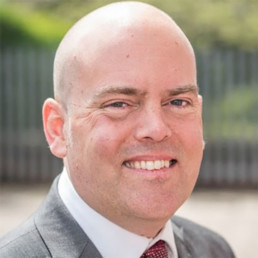
Written by Andrew Moffat
Andrew Moffat has been teaching for 25 years and is currently PD Lead at Excelsior MAT. He is the author of “No Outsiders in our school: Teaching the Equality Act in Primary Schools” and “No Outsiders: everyone different, everyone welcome”. In 2017 Andrew was awarded a MBE for services to equality and diversity in education and in 2019 he was listed as a top ten finalist in the Varkey Foundation Global Teacher Prize.
This week is Transgender Awareness Week which is a great opportunity to launch our new film, “Teaching Transgender Awareness using No Outsiders. The film shows that there are trans children in our schools today and many of those schools are doing an excellent job keeping them safe.
The Keeping Children Safe In Education guidance (Gov.UK, 2023) sets out expectations for schools to safeguard LGBT children;
“Risks can be compounded where children who are LGBT lack a trusted adult with whom they can be open. It is therefore vital that staff endeavour to reduce the additional barriers faced and provide a safe space for them to speak out or share their concerns with members of staff.” (para 204)
Schools in England and Wales are currently waiting for DfE guidance on gender and gender identity. In July 2023, The Times reported that proposed gender guidance had been pulled;
“A Whitehall source said that No10 and Badenoch had out forward a series of proposals to strengthen the guidance to the attorney general and government lawyers. The strongest – and a reflection of the governments concerns – was a blanket ban on social transitioning.” (Swinford, 2023)
The article quoted a government source saying:
“More information is needed about the long term implications of allowing a child to live as though they are the opposite gender and the impact that may have on other children too.” (Swinford, 2023)
The aim of this new film from No Outsiders is to show that schools are already working successfully with trans children and their parents. Schools are delivering age-appropriate lessons where children demonstrate knowledge and understanding and are taught about non-judgement, respect and acceptance of others.
My aim was to make a gentle film to take the heat out of the debate. In the film, we see Sam, a trans man living in Birmingham, return to his primary school to meet his former Y6 teacher. Sam sits in the seat where he sat as an 11 year old, and they discuss how his life has changed since then. His teacher describes how the school has moved on to reflect equality and inclusion today. Sam watches and comments on footage of a No Outsiders lesson at a school in Hertfordshire where transgender awareness is taught, and we hear Year 6 children speak eloquently on the subject. The film shows two parents (one is Sam’s Dad) talking about their experiences bringing up a trans child and the huge support they received from their respective schools. We also see Year 6 children in Bristol discuss texts used in their lessons and respond to the question, “Are you too young to know about this?”
I really wanted to show in this film that parents are working with schools, schools are listening, teachers are working hard to get it right. There is nothing scary or unusual about this. As teachers, we are good at putting the best interests of the children we teach at the heart of our policy and practice. My message to the DfE is, please let us get on with it. Schools want to get this right; we want to work with parents and children to create an environment where every child knows they belong.”
So, what now? What to do with the film? My first thought was to put a link on X (formerly twitter) and the No Outsiders facebook page, but I am aware of the toxic debate around this subject currently and I want to protect all the children and adults in the film. Of course, I realise once it is up on youtube, I lose control of who watches and where it goes, and in the coming months it may well pick up negative responses. but I feel in the first few weeks at least, for the first few views I would like allies to be seeing it. So, I immediately thought of Diverse Educators; a place where educators meet and support each other to make the world a better place. This should be the early audience for the film. Please feel free to share with friends and colleagues, show in staff meetings and use as a stimulus for discussion. I want people to see it. I hope people find it useful.
Watch the film here and feel free to share as you wish. https://www.youtube.com/watch?v=CIH7I_SEU0E&t=3s
What is No Outsiders?
The ‘No Outsiders’ programme was created in order to build an ethos of community cohesion and respect for difference. It has had a positive impact on schools, teachers, children, and communities and has received widespread commendation within the education sector. In 2017, CEO Andrew Moffat was awarded an MBE medal by The Queen (UK) for equality and diversity work in education. In 2019 he was a top 10 finalist in the Varkey Foundation Global Teacher Prize: a $1million award for outstanding contributions to the profession.
Teacher training related to the ‘No Outsiders’ programme has had widespread recognition. In the year 2023 January – November, Andrew Moffat has delivered No Outsiders training in 85 schools across the UK, and at numerous conferences and events, teaching over 35,000 children a No Outsiders lesson and training over 11,000 staff.
The No Outsiders guide “No Outsiders: everyone different, everyone welcome” is available here https://www.amazon.co.uk/s?k=andrew+moffat&crid=3OT7CA7JHVOS2&sprefix=%2Caps%2C308&ref=nb_sb_ss_recent_1_0_recent
A new No Outsiders scheme will be published April 2024.
Take Back the Narrative: Reflections on #DiverseEd Conference

Written by David Church
David is an LGBTQ+ education consultant and former Deputy Head Teacher. He has over 10 years experience in education and is passionate about supporting schools to develop an LGBTQ+ inclusive culture and curriculum. Outside of education, David is a Regional Ambassador for It Gets Better UK.
Attending the #DiverseEd Conference in Bristol on Saturday felt perfectly timed. The backdrop of recent developments from the UK government regarding the trans community weighed heavily on my mind as I prepared for the day ahead. It seemed as if the trans community was under siege from multiple angles: teachers potentially being allowed to discriminate against trans young people in schools (https://www.thepinknews.com/2023/09/23/ehrc-guidance-trans-misgendering-pupils-schools/) and the proposed ban on trans women from women’s wards (https://www.theguardian.com/society/2023/oct/03/trans-hospital-patients-in-england-to-be-banned-from-female–and-male-only-wards).
As a cisgender gay man who had previously faced adversity under the infamous Section 28 (and the legacy since), I felt a deep empathy for the trans community, witnessing their increasing vulnerability and the reported surge in hate crimes against them (https://www.gov.uk/government/statistics/hate-crime-england-and-wales-2022-to-2023/hate-crime-england-and-wales-2022-to-2023).
As an LGBTQ+ education consultant, I was acutely aware that action was needed to ensure the safety of trans+ children, young people, and staff in schools. Fortunately, the conference offered a range of sessions on just this, highlighting the need for greater trans inclusion & diversity.
Every session I attended resonated with me on both a personal and professional level, but my mind was consumed with the urgent need to address the ongoing challenges faced by the trans community.
The first workshop I attended was led by Sarah Bonnell School, focusing on social justice in schools and empowering students to enact change within their communities. Their discussion of “cold anger” as a catalyst for change struck a chord with me (https://www.psychologytoday.com/gb/blog/brave-talk/202109/4-types-anger-everyone-should-know-about). This anger, when harnessed, could drive the transformation needed to combat the prevailing discourse around trans inclusion.
Equally, Shaun Dellenty’s keynote, highlighted the importance of challenging the narrative of fear and division, emphasising that we are stronger together, whether or not we identify as trans. The theme that stuck in my mind: How do we channel this anger and negative energy into positive action?
Similarly, in Bennie Kara’s keynote, the power of stories to reshape narratives was explored. She discussed how we need to move beyond viewing the trans community as victims or dangerous (a perception which has continuously been fed by media and entertainment). The history of LGBTQ+ rights is full of unsung heroes such as Marsha P. Johnson and Sylvia Rivera, who spearheaded the original Stonewall uprising. Yet, their stories are often overlooked in the narrative of our school curricula.
It is imperative that we teach about these individuals to reframe the narrative and challenge prejudices and biases. This will foster a more respectful society, one that goes beyond mere tolerance to genuine acceptance of every individual, regardless of their identity.
Jo Brassington, in their session on trans and non-binary inclusion in schools, passionately reminded us that silence and indifference regarding trans+ inclusion make us complicit. It reminded me of the words of David Morrison, Chief of Army in the Australian Army, which echo this sentiment: “The standard you walk past is the standard you accept.”
This is not about understanding what it means to be trans but about having compassion and acceptance for every trans person; knowing them as individuals and hearing their story. Stories have been central to human culture since time began, and it is now time to reshape these stories in the public eye. As agents of change, we must stand with the trans community, working towards a compassionate view that acknowledges them as individuals.
The #DiverseEd Conference offered a glimpse into the power of collective action, empathy, and storytelling to take back the narrative, ensuring that the voices and experiences of the trans community are heard, respected, and valued. We, as educators, have a unique opportunity to lead this transformation, shaping a more inclusive and compassionate society by ensuring our curriculum fosters a positive narrative of a range of trans people; from the books we read, to the significant role models we explore and the policies we have in place. Taking back the narrative is not just a goal; it’s a collective responsibility that we must all be conscious about in our schools.
“But is it age-appropriate?”
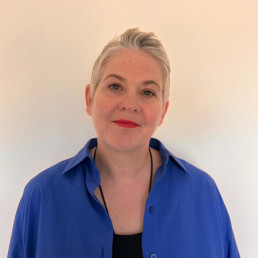
Written by Gerlinde Achenbach
Gerlinde Achenbach is a senior education consultant and former primary headteacher. Her career spans more than 35 years, with over 30 years teaching in schools. Since 2021 she has been supporting schools across the UK with Equity, Diversity & Inclusion, specifically LGBTQ+ inclusion. Her expertise is in leadership and changing school culture.
It’s now 20 years since Section 28 was repealed in England yet in primary schools we’re still, it seems, reluctant to talk with young people about being lesbian, gay, bisexual, trans or more. Some of us can’t get past the LGBT+ acronym, never actually defining what each letter stands for.
“Can I say ‘gay’ in Year 2?” one lead teacher for EDI was asked recently. We were talking during a recent 1:1 coaching session on developing best LGBT+ inclusive practice across the school. Deeply frustrated, the teacher bemoaned her experience with colleagues: “Some of them won’t include it beyond PSHE. Others never get round to it, telling me they’ve run out of time.”
Many primary class teachers are fearful of parental backlash in front of groups of other parents and their children. Some know that their senior leader colleagues are just as wary. And it’s true, this is one area where some parents and carers often feel emboldened to speak their mind. It’s embarrassing to be on the receiving end and, if you’re not confident about why we’re including LGBT+ themes in our learning and our environments, it’s easier to put your head in the sand. But let’s not forget that it’s statistically very likely that every family will have someone – parent, uncle or aunt, sibling, cousin or grandparent – who is lesbian, gay, bisexual, trans, queer or more.
“We want to make sure it’s age appropriate…”, say primary schools.
The DfE’s compulsory guidance on RSE came into force in September 2020, stating, ‘Primary schools are enabled and encouraged to cover LGBT content if they consider it appropriate to do so.’
With an independent review currently in progress to ‘advise the Secretary of State for Education on what is appropriate to teach in relationships and sex education and health education, and at what age’ , the stakes for ‘age-appropriate’ are high.
Of course, it’s important that the curriculum is appropriate for the age and experience of the children in each year group. But let’s not forget that when we talk about equity, diversity and inclusion, we’re moving beyond curriculum into the realm of whole school culture. The reservations we may have about being LGBT+ inclusive in younger year groups do not sit well with a culture of inclusivity and belonging. As a Primary Headteacher, I know that the majority of primary schools now include at least a handful of same-sex parented families, and often at least one child questioning their gender. That’s not forgetting the afore-mentioned LGBT+ relatives and friends. Surely we owe it to all the children living in LGBT+ families to see their own lived experience validated by our practice and provision? At the very least, our culture and curriculum should reflect and represent our LGBT+ children, both those who know it already and those who will know it soon enough. It’s our moral duty.
So, what could be more appropriate, for EYFS up, than talking about how families are made up differently, and that they have love for each other in common? Quite simply it is appropriate to have a curriculum where we share stories with young children about families and individuals who may dress, speak, identify or love differently from those they know, whilst talking about kindness and respect. We must also surely help children try to understand the injustice of being discriminated against, or harmed, simply for loving someone of the same gender.
We know that learning about sexual orientations other than heterosexuality does not ‘make you gay’, any more than learning that some people question the gender assigned them at birth ‘makes you trans’. Young people are discerning and knowledge is power. If any of the above applies to them, they will learn about it in a safe, accepting space. If it doesn’t apply, they have learned respect and compassion for others. Is it then morally acceptable to put our heads in the sand when we know that through educating our children, we educate our families and our communities?
Put simply, LGBT+ inclusion is about showing respect and compassion for all LGBT+ people as equal members of our diverse school and wider communities. It’s about being included in every aspect of school life and knowing you belong.
It’s always appropriate, at every age.
School Exclusion is a Safeguarding Issue

Written by Parise Carmichael-Murphy
Parise has worked with children and young people across the 0-25 age range in early years, specialist support secondary education, supported learning in further education, youth work, and inpatient settings.
School exclusion is a trigger point for risk of serious harm to young people. Young people excluded from school are more likely to experience social exclusion. They are placed at greater risk of developing severe mental health problems, obtaining education qualifications, experiencing unemployment, and being imprisoned. School exclusions can lead to isolation, which can be distressing and traumatic for a young person. This can have a detrimental impact on their mental health.
Pupil views of school exclusion suggest that they understand, or are aware, of the behaviours that may result in exclusion from their school. However, this does not mean that they have a similar understanding or awareness of the potential repercussions of school exclusion across the life course. Young people voice that exclusions can exacerbate difficult situations, lead to negative labelling, and limit school and learning time.
Statutory guidance on suspension and permanent exclusion clarify the headteacher’s duty to inform parties about exclusion, which lists parents, social workers, virtual school heads, local authorities and governing boards. However, the guidance does not clarify how the young person who experiences the exclusion should be informed and school policies are not typically worded in a way that is accessible or meaningful to young people.
Coram showed that the exclusion process or decision is not always made apparent to the young person who is expelled from school. Young people feel that exclusions are unfair or unjust when they have little opportunity to have their voices or concerns heard or appreciated throughout the process. Young people are likely to benefit from clearer guidance and better-regulated processes for involving them in any considerations being made to exclude them from school. This guidance should cover all means of ‘hidden’ exclusion, such as internal seclusion, managed moves, early exits and restricted timetabling.
Ofsted recognises the impact of school exclusion on restricting learning time, but not for placing young people at greater risk of harm. To better safeguard young people in schools, greater recognition of how cultures, systems and structures can place young people at risk of experiencing vulnerability or harm is vital. The growing number of exclusions for drug and alcohol-related incidents is contributing to the criminalisation of young people in education. The high-profile case of Child Q and the local safeguarding review revealed a failure to safeguard a young person at school. Those in positions of responsibility and authority overlooked risk present in the school and wider community environments; instead locating the ‘risk’ with Child Q. Child Q’s alleged connection with another young person who had been excluded from school was given as a reason to permit a strip search on school premises.
Clearer safeguards are needed to protect young people from exclusion in context of local needs. Schools should be both accountable and responsiblev for the safeguarding implications of school exclusion. This requires better funding, infrastructure and organisation as well as targeted mental health support services.
Faith is too often seen as a barrier to LGBT+ inclusion, so we’re launching new resources to change this
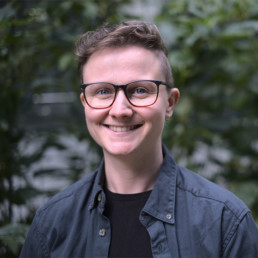
Written by Amy Ashenden
Director of Comms and Media/Interim CEO, Just Like Us, the LGBT+ young people’s charity.
As the new Interim Chief Executive of Just Like Us, my aim this year is to ensure more schools than ever have the tools they need to support their LGBT+ young people.
For several years now, School Diversity Week has been celebrated by so many incredible educators across the UK, showing young people that being LGBT+ is nothing to be ashamed of. Last summer, more than 5,000 primary and secondary schools took part. This year, 26-30 June, I believe it’s vital that schools with intersecting communities have the resources they need to celebrate School Diversity Week.
From faith schools to Welsh-speaking communities and primary schools, Just Like Us will be providing new sets of resources that cater specifically to the educators that need tailored LGBT+ inclusion tools the most. When half of young people (48%) tell us that their school hasn’t given them positive messaging about being LGBT+, it’s clear to me that we have a long way to go and that to change this, schools need the right kind of resources that speak to their individual ethos and community.
Our new independent research has found a third of teachers (30%) say faith has been a barrier to discussing LGBT+ topics in school. More than 7,000 UK teachers took part in our survey this February, revealing an indisputable need for resources that are both LGBT+ and faith inclusive.
That’s why we’ve launched a new series of faith and LGBT+ inclusive resources for Anglican, CofE, Catholic, Jewish and Muslim school communities. From primary assemblies to worksheets and videos featuring LGBT+ young people talking about their faiths, the resources are designed to give educators the tailored tools they need to celebrate School Diversity Week in a way that makes sense for their community. We have also worked in collaboration with LGBT+ faith-led organisations Keshet, Hidayah, One Body One Faith and Quest to develop these resources in a way that really speaks to the communities they’re designed to support.
In faith schools, the research found that 46% of teachers had previously found faith to be a barrier to talking about LGBT+ topics in the classroom, compared to 25% at non-faith schools. I believe it’s vital that we now provide the tools educators at faith schools need to support their young people who may be LGBT+ or have LGBT+ families.
Interestingly, just 3% of headteachers said that faith has always been a barrier to discussing LGBT+ topics.
A lack of LGBT+ inclusion in schools is so rarely about a lack of willingness but instead due to a historic lack of suitable resources that empower educators to get started on their journey. It’s also important that we remember that LGBT+ and faith communities are never totally separate – as you’ll see in the resources, faith is very important to many LGBT+ young people and to suggest that there’s no overlap just isn’t reality. You can absolutely be LGBT+ or an ally and belong to a faith – being Jewish and a lesbian, I know this reality well.
It’s also really important that we don’t erase the fantastic LGBT+ inclusion work that many faith schools are already doing with their pupils. St Stephen’s CofE Primary School in London is just one example of this. Nicola Collins, who works at the primary school, is a huge advocate for celebrating School Diversity Week and won our LGBT+ Inclusive Teacher of the Year award in 2022. She explained: “As a school, we feel passionate about challenging stereotypes and homophobic language. As a result, the children in our school are well informed and accepting of all people no matter who they are!”
We hope that these new resources will be a gamechanger for schools with faith communities to celebrate School Diversity Week this 26-30 June. We really welcome educators to get in touch with your feedback or any questions you might have about making LGBT+ topics faith inclusive.
Acceptance: Still so much work to be done.
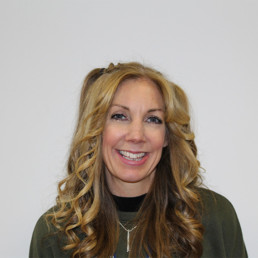
Written by Kelly Richens
Programme Director, BASCITT. BASCITT is proud to celebrate diversity and promote equality and inclusivity (see here)
Applying to train to teach is a daunting enough task; the whole construction of your personal statement and how it defines you, all of your work experience, your qualifications and who will be your referees. All wrapped up in the deep emotions of taking this huge step towards becoming a life-changer for young people.
If this wasn’t searching enough in terms of self-exploration and presenting yourself, there is a section that says ‘Criminal Record and Professional Misconduct’ in which an applicant can make any relevant declaration.
I had an email confirming an application in which there had been such a declaration. Imagine my horror when I opened the webpage to view the application and read: ‘I am unsure whether this is a safeguarding issue, however I feel it necessary to raise and protect myself and others from misunderstanding. I am transgender.’
A flood of emotions ensued: rage that this applicant had felt being transgender could be a safeguarding issue; sadness that whilst she wanted to share this information, she had chosen to include in in a section labelled ‘criminal record’; fear that there are groups of people without the psychological safety to just be who they are without recourse of judgement; and the smallest amount of pride that she had actually been brave to share at all.
So rather than my first conversation with this applicant about her potential qualities as a teacher, I had to have a difficult conversation of reassuring and coaching her that she was in safe hands with us. What a shame that we could not talk instantly about her joy of her subject, or why she was applying to us. Her being transgender was a huge distraction from this and that is wrong.
Whilst I reflect on this, and have since interviewed and offered a training place to this lovely individual, based on her merit, I am still left without an answer of how do we stop this happening again? Keep promoting inclusivity? Keep the courageous conversations going? Keep educating and keep that positive momentum going on how we can continue to aim for a world in which an individual does not fear themselves being viewed through a judgmental lens? Instead a place where everyone can be celebrated for who they are and what they have to offer our pupils.
The Time is Now
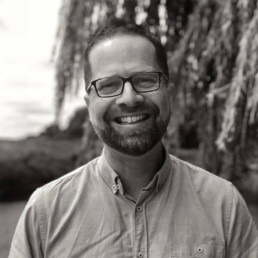
Written by Matthew Savage
Former international school Principal, proud father of two transgender adult children, Associate Consultant with LSC Education, and founder of #themonalisaeffect.
I write this as a father, and as an educator. I am angry, and I am scared.
Occasionally, partly as an experiment, I will share simultaneously on Facebook a) an innocuous post with a smiling photo of me; and b) a ‘call to action’ in support of my two trans children in an alarmingly transphobic world. The former consistently attracts lots of engagement, and the latter virtually none. My inference, corroborated by conversations I have had, is that a majority of people do not want even to enter what they see as a polarised and toxic debate.
This seems to me to be a victory for transphobia, and the ‘gender-critical’ right wing: that it is now widely accepted that we need to debate this at all, when any debate over the human rights of any other protected characteristic would be widely deemed abhorrent. Therefore, whilst some would argue that now is the time for calm debate, and for pause and reflection, this post is none of these. For I would argue that there is also a time for advocacy and allyship, and for activism and action. And the time is now.
I was young enough to experience the acidic effect of Section 28 as a teenager. Growing up in the 1980s, I was oblivious of the identities and expressions of the LGBTQ+ community: in part, this was due to a cowardly and shameful lack of representation in the media, sport and public life, and, in part, to the ignorance and fear of the blinkered society which tried to bring me up; but it was also due to the inability and incapacity of educators even to talk about those lives, even as so many of those same lives were being decimated by a new, deadly virus.
This violent clause was repealed in Scotland in 2000 (it seems the nation I now call home was ever ahead of its southern neighbours), as one of the earliest pieces of legislation enacted by the nascent Scottish parliament and, eventually, by Westminster in 2003. Peace had defeated violence, and love had vanquished hate. However, violence and hate, it seems, had not been beaten, but had merely lurked, waiting for their renaissance; and a new Section 28 lies on the horizon.
At the time of writing this, just over 205,000 people have signed a parliamentary petition calling for the government to “Remove LGBT content from the Relationships Education curriculum”, and this is now awaiting a date for parliamentary debate. Meanwhile, just over only 92,000 people have signed a counter-petition calling for that same government not to do so, and the government is only obliged to ‘respond’.
That is 120% more hatred than love, and 120% more violence than peace.
There is no debate, when it comes to deciding who has human rights and who does not. There is no calm when some of the most oppressed, attacked and marginalised children, young people and adults in our society are under attack. There is no reflection, when the facts and the statistics instantly destroy the hatred, on the too few occasions they are shared. And there is no pause, when children’s and young people’s very lives are in danger.
I write this as a father, and as an educator. I am angry, and I am scared.
Please give your voice to peace and love, both through this petition, and through literally any other means possible.
The time is now.

